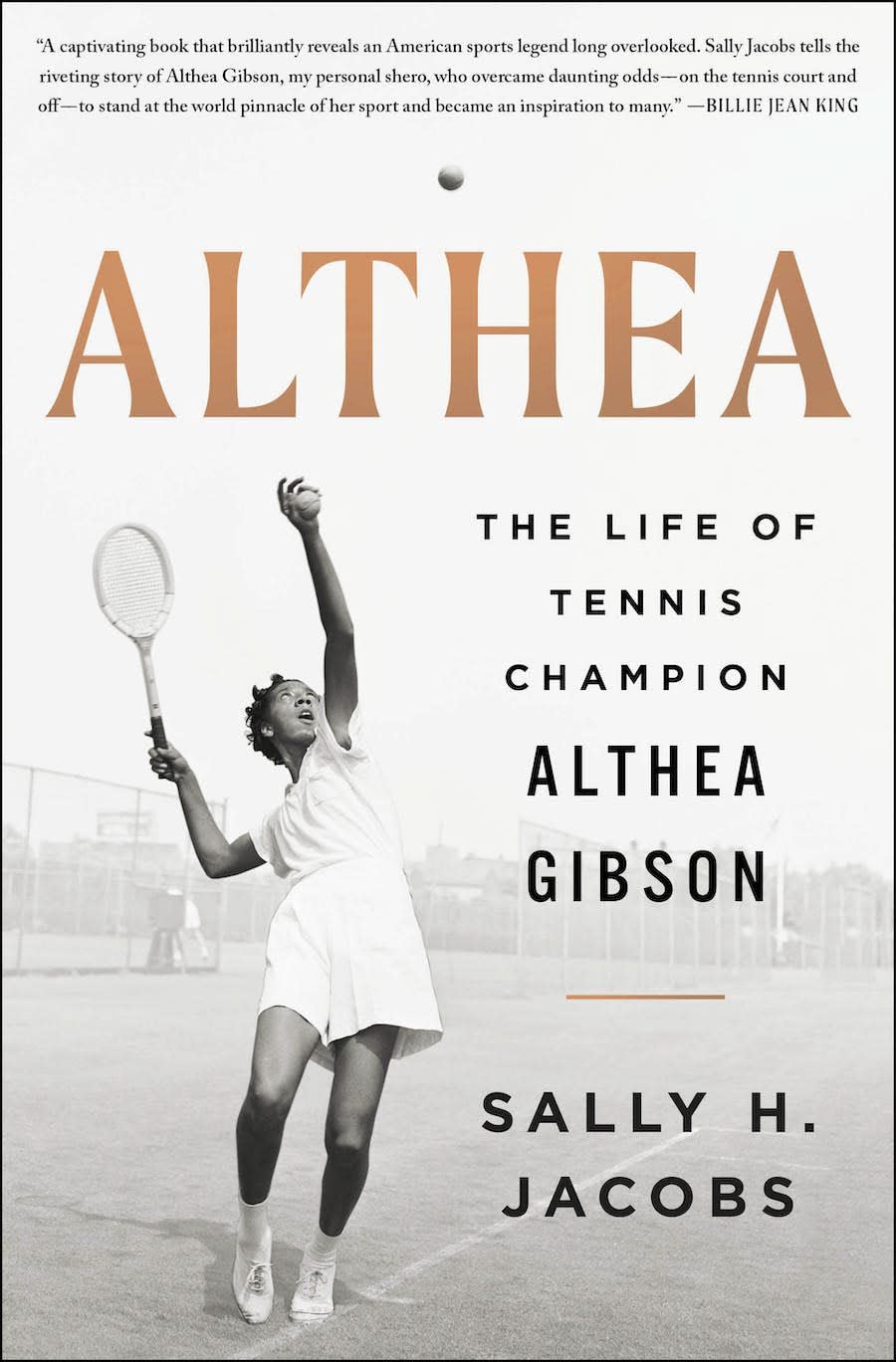New biography of Althea Gibson highlights Black tennis star's Wilmington years
![Before she became the first Black person to win Wimbledon, Althea Gibson spent part of her youth in Wilmington. A Williston High School graduate, she honed her tennis game at the home of Dr. Hubert Eaton, who had a court behind his home on Orange Street. [AP PHOTO]](https://s.yimg.com/ny/api/res/1.2/QaIfdsQESCrLTUeVLpCaUA--/YXBwaWQ9aGlnaGxhbmRlcjt3PTEyNDI7aD0xNTg3/https://media.zenfs.com/en/star-news/c853380d92cf7d20308b775561f2ff2d)
- Oops!Something went wrong.Please try again later.
She is possibly the single most famous graduate of Wilmington's Williston High School. Althea Gibson: The woman who broke the color bar in American tennis, the first person of color to win Wimbledon, a 12-time Grand Slam champion.
Gibson wasn't born here, but her Wilmington years get full treatment in "Althea: The Life of Tennis Champion Althea Gibson," a new biography by former Boston Globe writer Sally W. Jacobs.
The future athlete was actually born in 1927 in Silver, an unincorporated farm community an hour's train ride from Charleston, S.C.
When she was 3, however, after the boll weevil ate too many cotton crops, her parents pulled up stakes and moved north to Harlem to seek opportunity.
Then, the Depression hit.
Life was tough. The Gibsons had several children and Althea's father tried to rule the family with his belt and an appliance cord. Even in an age of "spare the rod, spoil the child," his beatings were so brutal that Althea was taken in by the New York Society for the Prevention of Cruelty to Children.

As a result, little "Al," as she was known, grew up on the streets, subsisting on shoplifting. When the school system tried to pigeonhole her in a trade school, she just dropped out, spending her time in pool halls (she became quite the billiards player) and movie matinees.
The story might have ended there. But the gangly, 5-foot-11 kid had incredible speed and hand-eye coordination. She also hated to lose. Eventually, she attracted the attention of Fred Johnson, the one-armed coach for the Cosmopolitan Tennis Club for middle-class Harlem residents.
Those residents turned up their noses at the teenager dressed in a T-shirt and torn jeans. Was she a boy or a girl?
Then they watched her play.
Johnson and the Cosmo Club started sponsoring her in events staged by the American Tennis Association (ATA), the face of black tennis in the Jim Crow segregation era.
Eventually, she drew the attention of the men Jacobs calls "the two Doctors" — Hubert A. Eaton of Wilmington and Robert Johnson of Lynchburg, Virginia.
Both men were M.D.s and ranked stars in the ATA; Eaton had won collegiate and doubles titles and was a regular contender.
In Wilmington, Eaton became a civil rights leader as the lead plaintiff in lawsuits that ultimately desegregated New Hanover County schools, its hospitals and most other local institutions.
Hubert Eaton Sr. What to know about a Wilmington icon whose legacy of school desegregation is in peril
Johnson was nicknamed "the Godfather of Black Tennis." In his spare time he ran a summer training program that would nurture a generation of Black tennis champions, including pro players Arthur Ashe and Wilmington's Lenny Simpson.
The two doctors were playing a long game. They wanted to put Black players into the lily-white U.S. Lawn Tennis Association (USLTA). To do so, they needed a star so powerful and he, or she, could not be denied. That star would also need the poise to handle the media and the manners to placate the doyennes and fussbudgets of the USLTA.
So they approached Gibson with a deal. She would spend the school year in Wilmington, where she would finish high school (no dropouts for the USLTA), practice with Eaton in the afternoon and enjoy room and board. Eaton and his wife, Celeste, a co-founder of the local Links chapter, would tutor her on table manners and decorum.
In summer, she'd head up to Lynchburg and study intensively with Johnson.
It worked, mostly.
Occasionally, young Althea would wander into a pool hall. Once, she took a joyride in an Eaton family car. Still, she mostly stuck to her discipline.
Although she was 19 when she entered Williston, Wilmington's all-black high school in segregation, she seems to have enjoyed herself. She played basketball (the women's team went undefeated for her years there), played saxophone in the marching band during football season and, though she wasn't a natural scholar, graduated 10th in her class. Her voice was so low the choir director placed her with the tenors (she would later sing professionally).
By 1949, she was ready for Florida A&M University, and for serious tournament play.
Jacobs, whose previous book, "The Other Barack," was about President Obama's father, does her homework. For her Wilmington chapters she interviewed local like Lenny Simpson (founder of One Love Tennis, based at Eaton's former home and court) and Bertha Todd, and closely read Eaton's memoir, "Every Man Should Try."
She also clearly loves tennis. Her descriptions of Gibson's key matches read like Shelby Foote describing a Civil War battle, filled with tension and suspense.
As Jacobs notes, Gibson's career fell before the big-money prizes of tennis' "Open" era. Basically, she had to leave the game to earn a living. She turned in part to golf, where she helped desegregate the Ladies Professional Golf Association.
Gibson's last years were marked by health problems, and friends had to conduct fundraisers to cover her medical bills.
Jacbos argues that organized tennis has never given Gibson the credit she deserves, and that without her, there would have been no Venus or Serena Williams.
"Althea" should go a long way toward correcting the record.
Book review
'ALTHEA: The Life of Tennis Champion Althea Gibson'
By Sally W. Jacobs
St. Martin's, $32
This article originally appeared on Wilmington StarNews: Althea Gibson biography highlights tennis star's Wilmington NC years

